<< Previous | Displaying results 5901-5925 of 6769 for "" | Next >>
Corpses found by US soldiers after the liberation of the Gunskirchen camp, a subcamp of the Mauthausen concentration camp. Austria, after May 5, 1945.
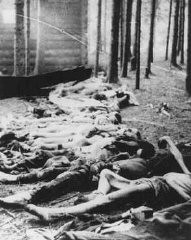
Survivors of the Ebensee subcamp of the Mauthausen concentration camp. Ebensee, Austria, May 8, 1945.
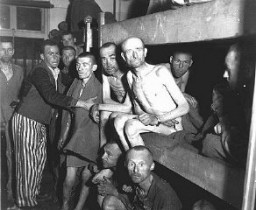
Site where members of Einsatzgruppe A and Estonian collaborators carried out a mass execution of Jews in September 1941. Kalevi-Liiva, Estonia, after September 1944.
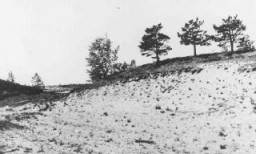
Deportation from the Kovno ghetto to forced-labor camps in Estonia. Kovno, Lithuania, October 1943.
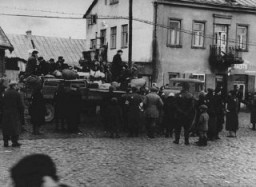
Corpses of inmates from the Klooga camp stacked for burning. Soviet troops discovered the bodies when they liberated the camp. Estonia, September 1944.
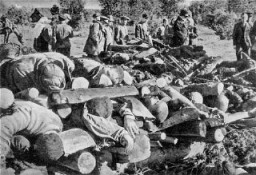
Corpses of inmates from the Klooga camp stacked for burning. Soviet troops discovered the bodies when they liberated the camp. Estonia, September 1944.
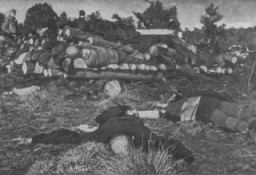
Corpses of inmates discovered by Soviet troops at the Klooga forced-labor camp. Nazi guards and Estonian collaborators had executed the prisoners and then stacked the bodies for burning. Estonia, September 1944.

At the Klooga concentration camp, Soviet soldiers examine the bodies of victims left by the retreating Germans. Klooga, Estonia, September 1944.
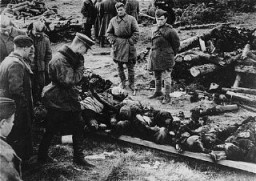
View of the Jasenovac concentration camp in Croatia. Jasenovac, Yugoslavia, 1941-1942.
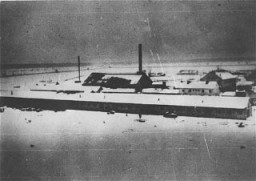
Ustasa (Croatian fascist) guard next to a watchtower at the Jasenovac concentration camp. Yugoslavia, between 1941 and 1944.
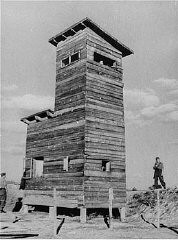
View of the brick factory in the Jasenovac concentration camp in Croatia. Jasenovac, Yugoslavia, between 1941 and 1944.

Ustasa (Croatian fascist) camp guards order a Jewish man to remove his ring before being shot. Jasenovac concentration camp, Yugoslavia, between 1941 and 1945.
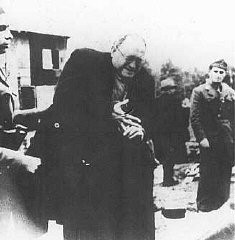
Ustasa (Croatian fascist) guards alongside belongings of prisoners at the Jasenovac concentration camp. Yugoslavia, between 1941 and 1945.
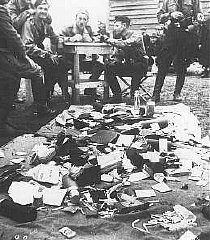
Ustasa (Croatian fascist) guards search prisoners and take their belongings upon arrival at Jasenovac concentration camp. Yugoslavia, between 1941 and 1945.
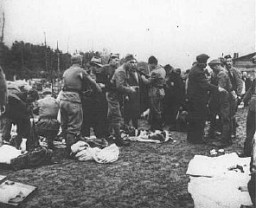
Ustasa (Croatian fascist) guards force a prisoner into a pit to be shot. Jasenovac concentration camp. Yugoslavia, probably 1942.
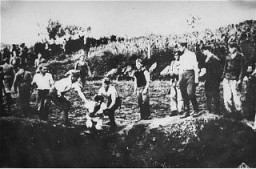
A Ustasa (Croatian fascist) guard stands amid corpses at the Jasenovac concentration camp, Yugoslavia, 1942.
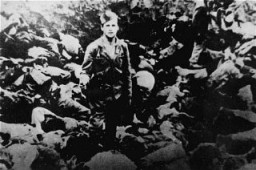
Serbs and Roma (Gypsies) who have been rounded up for deportation are marched to the Jasenovac concentration camp under Ustasa guard. Yugoslavia, 1942–43.
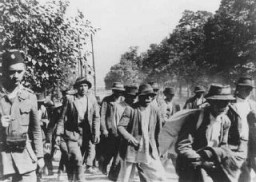
Serbs interned in the Jasenovac concentration camp in Croatia. Jasenovac, Yugoslavia, 1941–45.
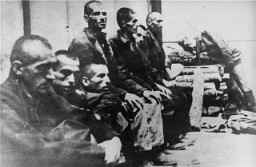
This document is a referral slip that ordered the individual names, Samuel Hirschenhauser, to the Jasenovac camp in Croatia. June 24, 1942.
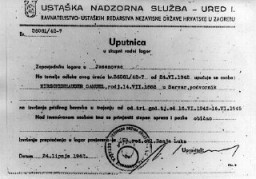
Members of the SA post signs demanding that Germans boycott Jewish-owned businesses. Berlin, Germany, April 1, 1933.
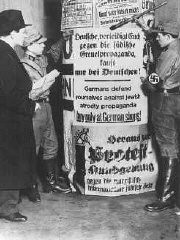
A boycott sign posted on the display window of a Jewish-owned business reads: "Germans defend yourselves against Jewish atrocity propaganda. Buy only at German shops!" Berlin, Germany, April 1, 1933.
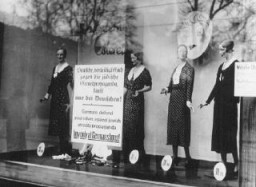
At Berlin's Opernplatz, the burning of books and other printed materials considered "un-German" by members of the SA and students from universities and colleges in Berlin. Germany, May 10, 1933.

Entrance to the public baths in Wannsee with a sign stating, "Entrance to Jews is forbidden." Berlin, Germany, 1935.
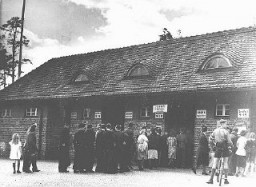
German Jews seeking to emigrate wait in the office of the Hilfsverein der Deutschen Juden (Relief Organization of German Jews). On the wall is a map of South America and a sign about emigration to Palestine. Berlin, Germany, 1935.

German Jews crowd the Palestine Emigration Office in an attempt to leave Germany. Berlin, Germany, 1935.
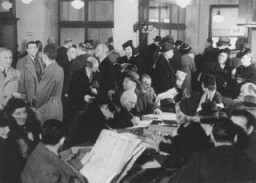
We would like to thank Crown Family Philanthropies, Abe and Ida Cooper Foundation, the Claims Conference, EVZ, and BMF for supporting the ongoing work to create content and resources for the Holocaust Encyclopedia. View the list of donor acknowledgement.